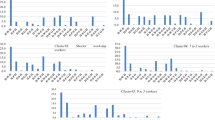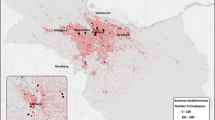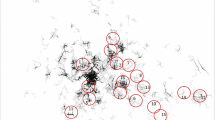Abstract
This study examines the influence of the built environment on trip-chaining behavior. Based on weekday travel in the Halifax Regional Municipality, we develop four separate models of tour complexity, each corresponding to a specific type of tour. The average number of trips per tour is regressed against built environment characteristics while household, personal, and tour-specific characteristics and residential self-selection are controlled. We apply ordinary least squares regression and spatial lag models and use a comprehensive set of density, diversity, design, and accessibility metrics near home and workplace. The results indicate that higher accessibility and mixed land-use is associated with simpler home-based, non-work tours. Workers residing away from opportunities make complex tours near workplaces located in high accessibility areas. Auto users make more complex tours. Also, most workers make complex commute tours compared to home-based or work-based non-work tours. In general, individuals compensate for the poor accessibility of residential locations by making complex tours, relying on auto, and chaining non-work trips with commuting. The significant role of attitudinal variables is also observed, thus revealing the presence of residential self-selection in trip-chaining behavior.


Similar content being viewed by others
Notes
Work refers to both work and school.
The value of β was determined empirically. We ran a regression model with distance of every trip destination from home as the independent variable and the natural logarithm of trip frequency as the dependent variable. The model coefficient gave the value of β.
Due to space limitations we only display the variables that are significant in our models. The descriptive statistics of other variables are available upon request.
OpenGeoDa is open source software, available at https://geodacenter.asu.edu/software.
Abbreviations
- TB:
-
Travel behavior
- BE:
-
Built environment
- TDM:
-
Travel demand management
- HRM:
-
Halifax Regional Municipality
- STAR:
-
Space-Time Activity Research
- CBD:
-
Central business district
- HOH:
-
Home-other-home
- HW/WH:
-
Home-work or work-home
- WOW:
-
Work-other-work
- OLS:
-
Ordinary least squares
References
Anselin, L.: Spatial Econometrics: Methods and Models. Kluwer, Dordrecht (1988)
Bagley, M.N., Mokhtarian, P.L.: The impact of residential neighborhood type on travel behavior: a structural equations modeling approach. Ann. Reg. Sci. 36, 279–297 (2002)
Bhat, C.R.: Work travel mode choice and number of non-work commute stops. Transp. Res. Part B Methodol. 31, 41–54 (1997)
Boarnet, M.G., Sarmiento, S.: Can land-use policy really affect travel behaviour? A study of the link between non-work travel and land-use characteristics. Urban Stud. 35, 1155–1169 (1998)
Cao, X., Mokhtarian, P.L., Handy, S.L.: Differentiating the influence of accessibility, attitudes, and demographics on stop participation and frequency during the evening commute. Environ. Plan. B Plan. Des. 35, 431–442 (2008)
Cervero, R., Kockelman, K.: Travel demand and the 3Ds: density, diversity, and design. Transp. Res. Part D Transp. Environ. 2, 199–219 (1997)
Chen, C., Gong, H., Paaswell, R.: Role of the built environment on mode choice decisions: additional evidence on the impact of density. Transportation 35, 285–299 (2008)
Crane, R.: On form versus function: will the new urbanism reduce traffic, or increase it? J. Plan. Educ. Res. 15, 117–126 (1996)
Donaghy, K., Rudinger, G., Poppelreuter, S.: Societal trends, mobility behaviour and sustainable transport in Europe and North America. Transp. Rev. 24, 679–690 (2004)
Ewing, R., Cervero, R.: Travel and the built environment: a meta-analysis. J. Am. Plan. Assoc. 76, 265–294 (2010)
Frank, L., Bradley, M., Kavage, S., Chapman, J., Lawton, T.K.: Urban form, travel time, and cost relationships with tour complexity and mode choice. Transportation 35, 37–54 (2008)
Frank, L.D., Sallis, J.F., Saelens, B.E., Leary, L., Cain, K., Conway, T.L., Hess, P.M.: The development of a walkability index: application to the neighborhood quality of life study. Br. J. Sports Med. 44, 924–933 (2010)
Golob, T.F.: A simultaneous model of household activity participation and trip chain generation. Transp. Res. Part B Methodol. 34, 355–376 (2000)
Guo, J.Y., Bhat, C.R.: Operationalizing the concept of neighborhood: application to residential location choice analysis. J. Transp. Geogr. 15, 31–45 (2007)
Handy, S., Cao, X., Mokhtarian, P.: Correlation or causality between the built environment and travel behavior? Evidence from Northern California. Transp. Res. Part D Transp. Environ. 10, 427–444 (2005)
Hensher, D.A., Reyes, A.J.: Trip chaining as a barrier to the propensity to use public transport. Transportation 27, 341–361 (2000)
Ho, C.Q., Mulley, C.: Multiple purposes at single destination: a key to a better understanding of the relationship between tour complexity and mode choice. Transp. Res. Part A Policy Pract. 49, 206–219 (2013)
Kitamura, R., Akiyama, T., Yamamoto, T., Golob, T.F.: Accessibility in a metropolis: toward a better understanding of land use and travel. Transp. Res. Rec. J. Transp. Res. Board 1780, 64–75 (2001)
Krizek, K.J.: Neighborhood services, trip purpose, and tour-based travel. Transportation 30, 387–410 (2003a)
Krizek, K.J.: Residential relocation and changes in urban travel: does neighborhood-scale urban form matter? J. Am. Plan. Assoc. 69, 265–281 (2003b)
Krizek, K.J., Waddell, P.: Analysis of lifestyle choices: neighborhood type, travel patterns, and activity participation. Transp. Res. Rec. J. Transp. Res. Board 1807, 119–128 (2002)
Lee, J.: Impact of neighborhood walkability on trip generation and trip chaining: case of Los Angeles. J. Urban Plan. Dev. 142(3), 05015013 (2015)
Lee, Y., Washington, S., Frank, L.D.: Examination of relationships between urban form, household activities, and time allocation in the Atlanta metropolitan region. Transp. Res. Part A Policy Pract. 43, 360–373 (2009)
Liu, C., Susilo, Y.O., Karlström, A.: Measuring the impacts of weather variability on home-based trip chaining behaviour: a focus on spatial heterogeneity. Transportation 43, 843–867 (2016)
Ma, J., Mitchell, G., Heppenstall, A.: Daily travel behaviour in Beijing, China: an analysis of workers’ trip chains, and the role of socio-demographics and urban form. Habitat Int. 43, 263–273 (2014)
Maat, K., Timmermans, H.: Influence of land use on tour complexity: a Dutch case. Transp. Res. Rec. J. Transp. Res. Board 1977, 234–241 (2006)
McGuckin, N., Murakami, E.: Examining trip-chaining behavior: comparison of travel by men and women. Transp. Res. Rec. J. Transp. Res. Board 1693, 79–85 (1999)
Mokhtarian, P.L., Cao, X.: Examining the impacts of residential self-selection on travel behavior: a focus on methodologies. Transp. Res. Part B Methodol 42, 204–228 (2008)
Noland, R.B., Thomas, J.V.: Multivariate analysis of trip-chaining behavior. Environ. Plan. 34, 953–970 (2007)
Recker, W.W., Chen, C., McNally, M.G.: Measuring the impact of efficient household travel decisions on potential travel time savings and accessibility gains. Transp. Res. Part A Policy Pract. 35, 339–369 (2001)
Scott, D.M., Horner, M.: The role of urban form in shaping access to opportunities. J. Transp. Land Use 1, 89–119 (2008)
Strathman, J.G., Dueker, K.J., Davis, J.S.: Effects of household structure and selected travel characteristics on trip chaining. Transportation 21, 23–45 (1994)
Van Acker, V., Witlox, F.: Commuting trips within tours: how is commuting related to land use? Transportation 38, 465–486 (2011)
Wallace, B., Barnes, J., Rutherford, G.S.: Evaluating the effects of traveler and trip characteristics on trip chaining, with implications for transportation demand management strategies. Transp. Res. Rec. J. Transp. Res. Board 1718, 97–106 (2000)
Wang, R.: The stops made by commuters: evidence from the 2009 US National Household Travel Survey. J. Transp. Geogr. 47, 109–118 (2015)
Ye, X., Pendyala, R.M., Gottardi, G.: An exploration of the relationship between mode choice and complexity of trip chaining patterns. Transp. Res. Part B Methodol. 41, 96–113 (2007)
Zellner, A.: An efficient method of estimating seemingly unrelated regressions and tests for aggregation bias. J. Am. Stat. Assoc. 57, 348–368 (1962)
Acknowledgements
We would like to thank three anonymous reviewers for providing insightful comments to improve our paper.
Author information
Authors and Affiliations
Corresponding author
Rights and permissions
About this article
Cite this article
Chowdhury, T., Scott, D.M. Role of the built environment on trip-chaining behavior: an investigation of workers and non-workers in Halifax, Nova Scotia. Transportation 47, 737–761 (2020). https://doi.org/10.1007/s11116-018-9914-3
Published:
Issue Date:
DOI: https://doi.org/10.1007/s11116-018-9914-3




